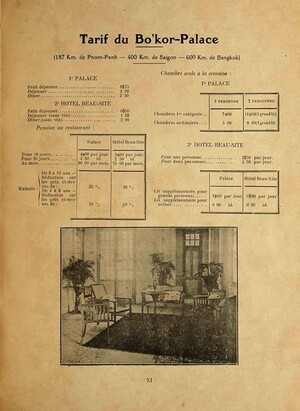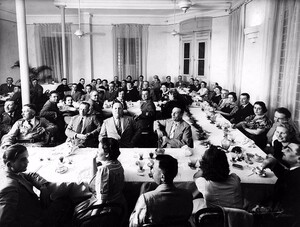Phạm Văn Khôi
For half the year 1910, one of his younger colleagues was a 20 year old man named Nguyễn Văn Thành, one of the many aliases of the future Hồ Chí Minh. - an excerpt
Khoi’s education enabled him to pass exams and achieve the rank of mid-level mandarin. He managed an appointment to Hue, till he ran afoul of the powerful Ngô Đình family. They prevailed upon the French to have him transferred to his home province, where he became responsible for overseeing the local fishing activity, the fish market and the transport of fish and sea products to the southern interior and to Saigon. He was a widower since the birth of his younger daughter, Phuong (b1932). He was a lover of things French, though not of the French themselves. He had a small collection of French paintings and original manuscripts. He could have sold them for a tidy sum, though not a fortune. But beauty had come to be in short supply in his life, and he could not not bear to part with them. He determined that they should comprise a legacy for his two daughters. His French language skill was limited, but it was enough to understand the orders of his former, French educated superiors. Beginning in 1929 his immediate superior was Ngô Đình Diệm, of the same family who had caused his removal from Hue. Having found much favor with the French, they made Diem governor of the province until 1933.
Khoi ran afoul of Diệm several times, over religious and social matters. Khoi was a devout Buddhist. Diệm a staunch Catholic with an ax to grind. His family had been victims of an anti-Catholic riot in the previous generation. Outside the Imperial Capital of Hue 100 Catholics had been rounded up, beaten up, burned out and buried alive by an enraged Buddhist mob allegedly egged on by mid-level mandarins. It was said that they then drank tea and alcohol for hours in order to piss on the mass grave till the suffocated corpses below were soaked. Diệm never can feel clean in the presence of Buddhists, especially mid-level mandarins. He also suspected Khoi of Communist sympathies. He would have included him in a general purge in 1929/30, but Khoi had been an unartful investor and the local aftershocks of the far away earthquake in New York had ruined him.
By 1935 frail Khoi eked out a living as a scribe, reading and writing letters for illiterates. He spent his days in the writing alcove of the beaux arts General Post Office. He was comforted by being ensconced in the most beautiful building in the city, even though it is situated between the Catholic Cathedral of Notre Dame, at the head of the rue Catinat, and the French Sûreté a block to the south. “Between Heaven and Hell,” people like to say. He thought it more like two levels of Hell. But he felt safe within his beautiful island of letters, surrounded by pots of ink for writing and pots of glue for affixing the most beautiful postage stamps, themselves works of art. Reams of precious paper from China and Japan and France, beautiful to look at and to touch, were his medium to the wide world; his old Waterman pen the messenger.


